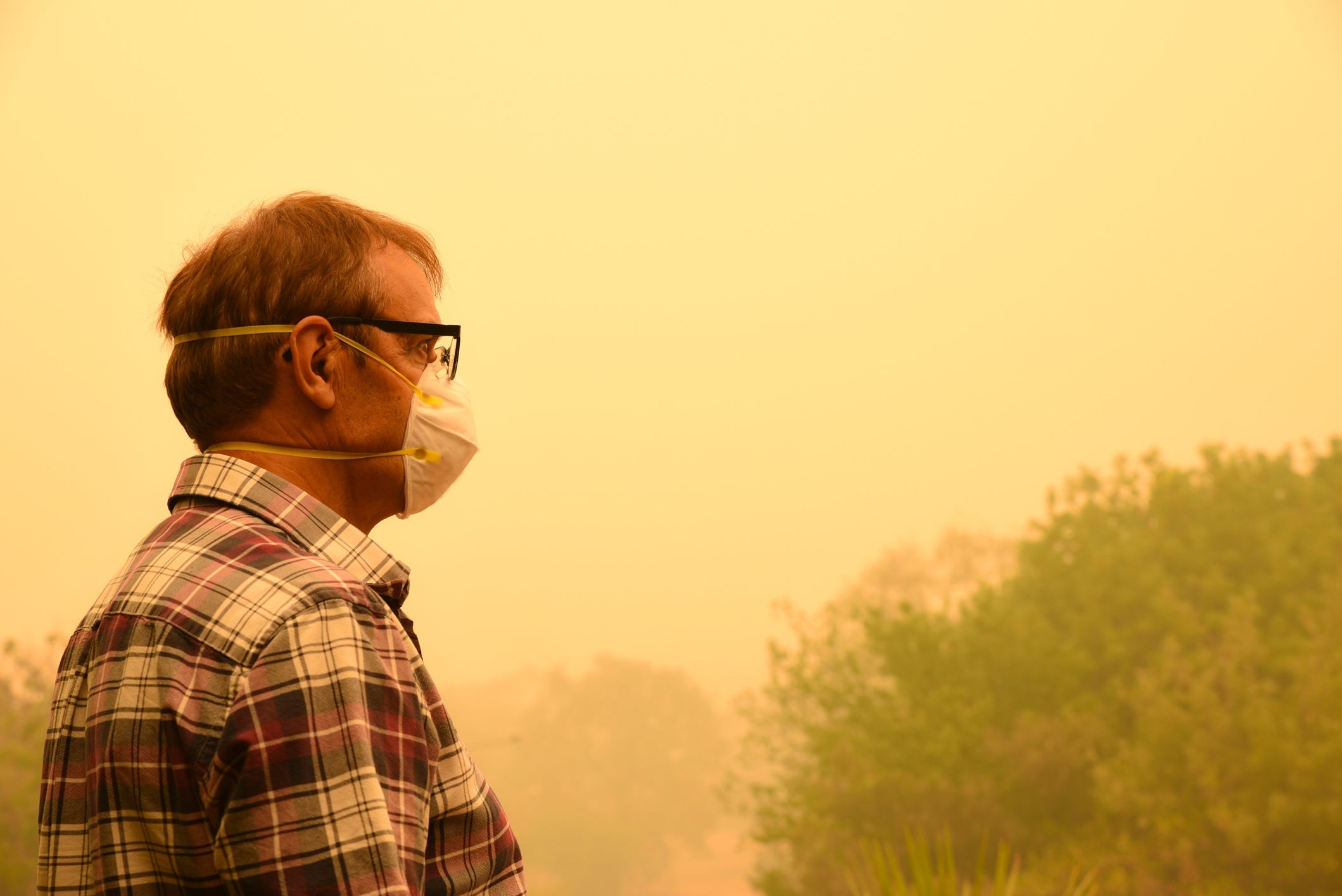Outdoor air pollution may increase non-lung cancer risk in older adults

For immediate release: August 3, 2023
Boston, MA—Chronic exposure to fine particulate air pollutants (PM2.5) and nitrogen dioxide (NO2) may increase non-lung cancer risk in older adults, according to a study led by Harvard T.H. Chan School of Public Health. In a cohort study of millions of Medicare beneficiaries, the researchers found that exposures to PM2.5 and NO2 over a 10-year period increased the risk of developing colorectal and prostate cancers. The researchers also found that even low levels of air pollution exposure may make people particularly susceptible to developing these cancers, in addition to breast and endometrial cancers.
“Our findings uncover the biological plausibility of air pollution as a crucial risk factor in the development of specific cancers, bringing us one step closer to understanding the impact of air pollution on human health,” said Yaguang Wei, research fellow in the Department of Environmental Health. “To ensure equitable access to clean air for all populations, we must fully define the effects of air pollution and then work towards reducing it.”
The study was published online August 1, 2023, in Environmental Epidemiology.
While air pollution has been established as a risk factor for lung cancer, and a link to breast cancer risk has been emerging, few studies have looked at its effects on prostate, colorectal, and endometrial cancer risk.
Researchers analyzed data from national Medicare beneficiaries aged 65 or older, collected from 2000 to 2016. All subjects were cancer-free for at least the initial 10 years of the study period. The researchers created separate cohorts for each type of cancer—breast, colorectal, endometrial, and prostate—with between 2.2 million and 6.5 million subjects in each cohort. Separate analyses looked at cancer risk under the impacts of air pollutants for various subgroups by factors including age, sex (for colorectal cancer only), race/ethnicity, average BMI, and socioeconomic status.
Drawing from a variety of air pollution data sources, the researchers developed a predictive map of PM2.5 and NO2 concentrations across the contiguous U.S. This was then linked to beneficiaries’ residential ZIP codes to enable the researchers to estimate individual exposures over a 10-year period.
Findings from the nationwide analysis showed that chronic PM2.5 and NO2 exposures increased the risk of developing colorectal and prostate cancers but were not associated with endometrial cancer risk. For breast cancer, NO2 exposure was associated with an increased risk, while the association for PM2.5 was inconclusive. The researchers suggested that the mixed associations may be due to variations in the chemical composition of PM2.5, which is a complex mixture of solid and liquid particles.
When the analysis was restricted to regions where air pollution levels were significantly below national standards and the composition of PM2.5 remained fairly stable, their effect on breast cancer risk was more pronounced. Stronger associations between exposures to both pollutants and endometrial cancer risk were also found at lower pollution levels.
In their analysis of risk by subgroups, the researchers found evidence suggesting that communities with higher average BMI may face disproportionately higher risk of all four cancers from NO2 exposure, and that Black Americans and those enrolled in Medicaid may be more susceptible to cancer risks (prostate and breast, respectively) from PM2.5 exposure.
The researchers noted that even communities with seemingly clean air were not immune to cancer risk. They found substantial associations between exposure to the two pollutants and the risks of all four cancers even at pollution levels below newly updated World Health Organization guidelines (which are lower than current U.S. standards).
“The key message here is that U.S. air pollution standards are inadequate in protecting public health,” said senior author Joel Schwartz, professor of environmental epidemiology. “The Environmental Protection Agency recently proposed stricter standards for PM2.5, but their proposal doesn’t go far enough in regulating this pollutant. Current NO2 standards are also woefully inadequate. Unless all of these standards become much, much stricter, air pollution will continue to result in thousands of unnecessary cases of multiple cancers each year.”
Other Harvard Chan School authors include Edgar Castro, Cristina Su Liu, Xinye Qiu, James Healy, and Bryan Vu.
Funding for the study came from the National Institutes of Health grants R01ES032418 and P30ES000002.
“Additive effects of ten-year exposures to PM2.5 and NO2 and primary cancer incidence in American older adults,” Yaguang Wei, Mahdieh Danesh Yazdi, Tszshan Ma, Edgar Castro, Cristina Su Liu, Xinye Qiu, James Healy, Bryan N. Vu, Cuicui Wang, Liuhua Shi, Joel Schwartz, Environmental Epidemiology, online August 1, 2023, doi: 10.1097/EE9.0000000000000265
Visit the Harvard Chan School website for the latest news, press releases, and multimedia offerings.
photo: iStock/Daniiielc
For more information:
Maya Brownstein
mbrownstein@hsph.harvard.edu
*This press release was amended on August 9, 2023. Due to a mistake in interpretation of data, the previous version of the release stated the study found that NO2 exposure is associated with a decreased risk of breast cancer. The authors have confirmed that the results showed that NO2 exposure is associated with an increased risk of breast cancer.
Harvard T.H. Chan School of Public Health brings together dedicated experts from many disciplines to educate new generations of global health leaders and produce powerful ideas that improve the lives and health of people everywhere. As a community of leading scientists, educators, and students, we work together to take innovative ideas from the laboratory to people’s lives—not only making scientific breakthroughs, but also working to change individual behaviors, public policies, and health care practices. Each year, more than 400 faculty members at Harvard Chan School teach 1,000-plus full-time students from around the world and train thousands more through online and executive education courses. Founded in 1913 as the Harvard-MIT School of Health Officers, the School is recognized as America’s oldest professional training program in public health.


